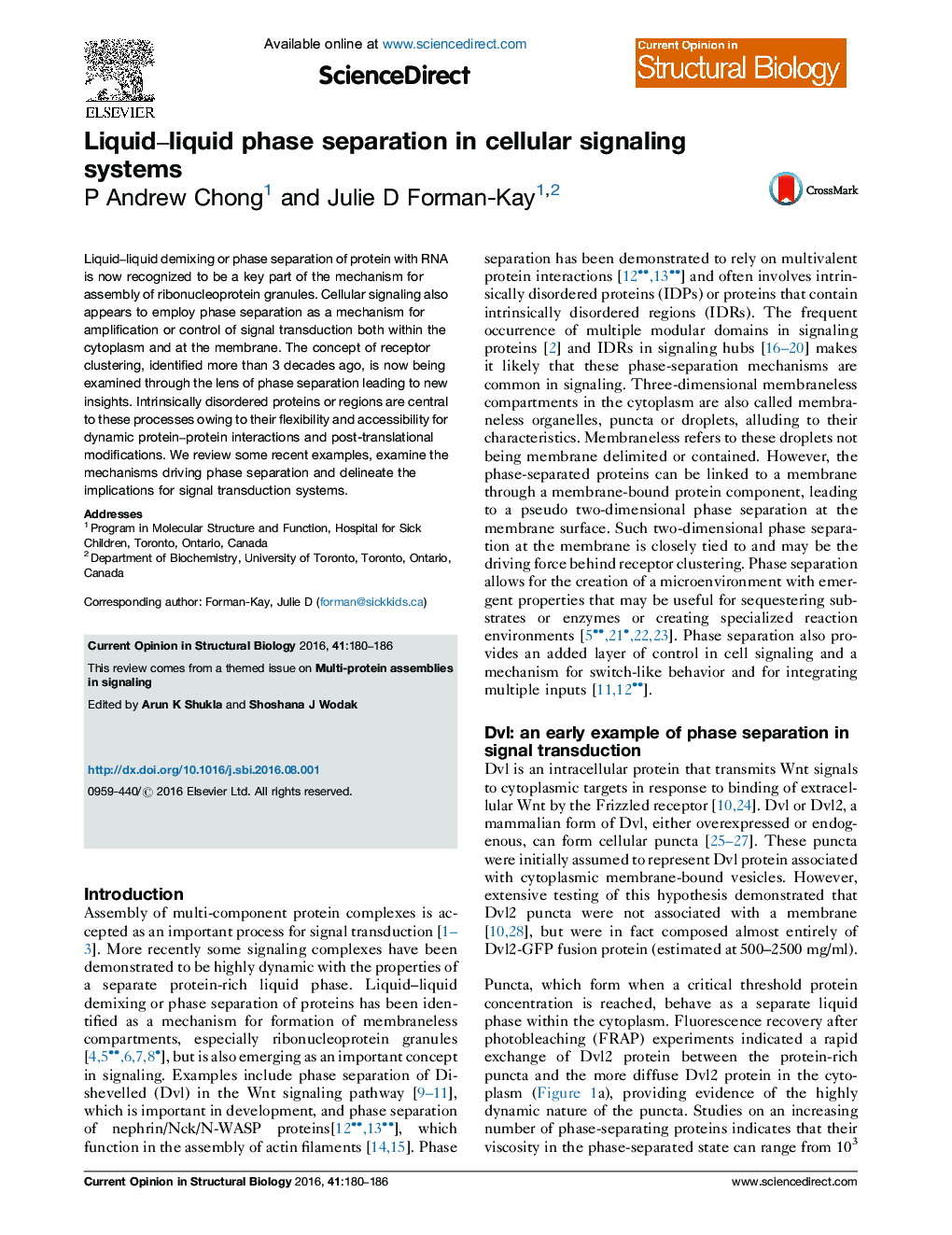| Article ID | Journal | Published Year | Pages | File Type |
|---|---|---|---|---|
| 8319532 | Current Opinion in Structural Biology | 2016 | 7 Pages |
Abstract
Liquid-liquid demixing or phase separation of protein with RNA is now recognized to be a key part of the mechanism for assembly of ribonucleoprotein granules. Cellular signaling also appears to employ phase separation as a mechanism for amplification or control of signal transduction both within the cytoplasm and at the membrane. The concept of receptor clustering, identified more than 3 decades ago, is now being examined through the lens of phase separation leading to new insights. Intrinsically disordered proteins or regions are central to these processes owing to their flexibility and accessibility for dynamic protein-protein interactions and post-translational modifications. We review some recent examples, examine the mechanisms driving phase separation and delineate the implications for signal transduction systems.
Related Topics
Life Sciences
Biochemistry, Genetics and Molecular Biology
Biochemistry
Authors
P Andrew Chong, Julie D Forman-Kay,
